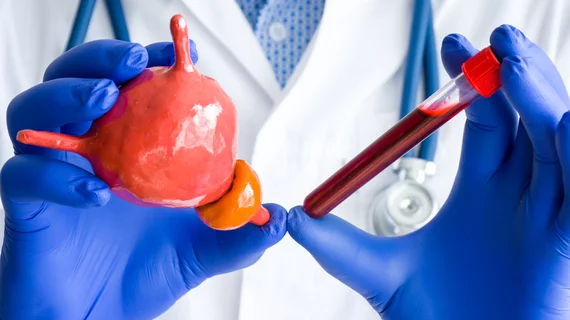MRI and genetic testing may help curb overtreatment of prostate cancer
Using a combination of MRI and genetic testing may help reduce overtreatment of prostate cancer, experts charged Friday in JAMA Network Open.
U.S. medicine has seen a marked uptick in the use of “watchful waiting” for the disease, monitoring patients carefully with imaging and administering treatment where necessary. But still, almost 50% of patients undergo immediate active treatment, one study found, which can lead to excess healthcare costs and potential patient harm.
Yale School of Medicine experts sought to explore imaging’s impact in avoiding aggressive unnecessary care. They found a clear correlation, though there was wide variation across different geographies.
“The findings of this study suggest that adoption of technologies designed to improve decision making may lead to perceivable reductions in overtreatment of prostate cancer,” assistant professor Michael Leapman, MD, clinical leader of Yale’s Prostate & Urologic Cancers Program, and colleagues wrote Oct. 8.
Their retrospective analysis utilized commercial insurance claims for prostate MRI and genomic testing logged between 2012 and 2019. A total of 65,530 newly diagnosed with prostate cancer met the study’s criteria, at an average age of 40-89. They separated the study into two segments—an “early period” between 2012-2014 and “late period” from 2017-2019.
Leapman et al. found the use of prostate MRI rose “significantly” from about 7% during the early period up to nearly 17% in the late segment. Same for genomic testing, which climbed from about 1% to nearly 13%. And the number of men managed using observation also shifted upward (from 26% to 35%), with the team noting that MRI and genomic testing were associated with increased odds of such treatment. Observation use also varied widely depending on geographic region.
“In the context of an expanding array of new diagnostic and prognostic tools in cancer care, these findings can guide discussions about the clinical decisions associated with their use,” the authors noted. “Prominent regional variation in the use of risk stratification technologies also emphasizes an opportunity to address emerging gulfs in utilization, particularly as they may relate to overtreatment.”

